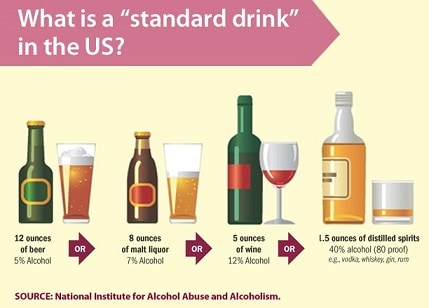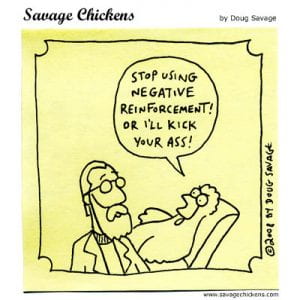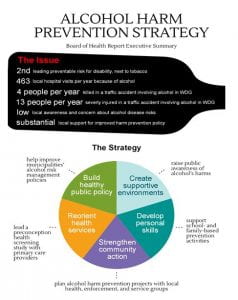Consumption of past month Alcohol Use and Binge Drinking among women in Georgia
Excessive alcohol consumption among women are of special concern to public health. In Georgia, excessive drinking of alcohol results in 2,555 deaths and 79,183 years of potential life lost each year (1). Many adverse health outcomes associated with excessive alcohol consumption in women which include cancer, heart disease, stroke, liver cirrhosis, preterm birth (5,7), fetal alcohol syndrome (3), and unintentional and intentional injuries (2). Although studies have been conducted on alcohol consumption of women in U.S., there is limited data on alcohol drinking patterns or changes in demographic shifts for alcohol drinking patterns among women in Georgia. Therefore, this study was conducted to compare alcohol consumption patterns of women in Georgia reported in 2011 with those reported in 2016.
The study used secondary data from telephone interviews of 14362 adults aged ≥18 years residing in Georgia; that participated in the Behavioral Risk Factor Surveillance System (BRFSS) survey in 2011 and 2016. Overall, 8977 women were analyzed. Measures focused on alcohol use and binge drinking and on the intensity of binge drinking in the past 30 days. Prevalence and 95% confidence intervals (CIs) for past month alcohol use (in the past 30 days) and binge drinking (4+ drinks on more than one occasion) by the study population were estimated overall and then analyzed. Among the surveyed women (N=8977), overall past month alcohol use showed a significant decrease in relative risk (2.5%, p<0.0001, Table1) from 2011 to 2016. However, significant increase in relative risk of past month alcohol use from 2011 to 2016 were found among women 65 years and older (41.8%, p <0.0001, Table 1) when compared to other age groups. Similarly, significant decline in the relative risk (12.6 %, p<0.0001, Table 2) of binge drinking among surveyed women from 2016 to 2011. However, significant increase in relative risk of binge drinking among women 65 years and older (145%, p<0.0001, Table 2) when compared to other groups from 2011 to 2016.
Alcohol is a risk factor for women for adverse health conditions. Overall, the findings showed that past month prevalence of alcohol use among women significantly decreased from 43.6% in 2011 to 42.5% in 2016 for Georgia. This is lower than the national estimates of past month alcohol use (57%) and 2016 (54%) in 2013. However, significant increase in the relative risk of past month alcohol use (41.8%) and binge drinking (percent change: 145 %) was seen among subgroup populations, particularly notable among women who are 65 years and older. Older adults are at particular risk for falls and injuries (6) and the unintentional injury death rate (8) ED-treated falls (9) hospitalized fall rates (2) and fall-related traumatic brain injury deaths (10). In 1990, those over the age of 65 comprised 13 percent of the U.S. population; by the year 2030, older adults are expected to account for 22 percent of the population. (U.S. Bureau of the Census 1996). As the population age 60 and older increases, there could be the potential for increase in the rate of alcohol consumption patterns leading to alcohol-related risks in this age group.
References
- Alcohol and Public Health: Alcohol-Related Disease Impact (ARDI) [database]. Accessed Dec 13, 2013.
- DeGrauw X, Annest JL, Stevens JA, Xu L, Coronado V. Unintentional injuries treated in
hospital emergency departments among persons aged 65 years and older, United States, 2006-2011 J Safety Res. 2016;56:105-109.
- Ethen MK, Ramadhani TA, Scheuerle AE, et al. Alcohol consumption by women before and during pregnancy. Matern Child Health J 2009; 13:274–85.
- Grant, B. F., Chou, S. P., Saha, T. D., Pickering, R. P., Kerridge, B. T., June Ruan, W., Zhang. (2017). Prevalence of 12-Month Alcohol Use, High-Risk Drinking, and DSM-IV Alcohol Use Disorder in the United States, 2001-2002 to 2012-2013: Results from the National Epidemiologic Survey on Alcohol and Related Conditions. JAMA Psychiatry, 74(9), 911.
- Hingson R, White A. New research findings since the 2007 Surgeon General’s Call to Action to Prevent and Reduce Underage Drinking: A review. J Stud Alcohol Drugs. 2014;75(1):158-169. PMID: 24411808.
- Kramarow E, Chen LH, Hedegaard H, Warner M. Deaths from Unintentional Injury Among Adults Aged 65 and Over: United States, 2000-2013. NCHS Data Brief 199. Hyattsville, MD: National Center for Health Statistics, 2015.
- Rehm J, Baliunas D, Borges GLG, et al. The relation between different dimensions of alcohol consumption and burden of disease: an overview. Addiction. 2010;105(5):817-843.
- Stevens JA, Rudd RA. Circumstances and contributing causes of fall deaths among persons aged 65 and older: United States, 2010. J Am Geriatr Soc. 2014;62(3):470-475.
- Sung KC, Liang FW, Cheng TJ, Lu TH, Kawachi I. Trends in unintentional fall-related traumatic brain injury death rates in older adults in the United States, 1980-2010: a join point analysis Neurotrauma. 2015;32(14):1078-1082.
- White A, Castle IJ, Chen CM, et al. Converging patterns of alcohol use and related outcomes among females and males in the United States, 2002 to 2012. Alcohol Clin Exp Res. 2015;39(9):1712-1726. PMID: 2633187
Table 1: Prevalence of and Percent change in 1- month Alcohol Use for Women in Georgia, U.S. by Sociodemographic characteristics, 2011 and 2016
| Characteristic | BRFSS Survey
2011 N=5958 |
BRFSS Survey
2016 N=3019
|
% Change | ||
| % (95% CLa) | p-value | % (95% CLa) | p-value | ||
| Total | 43.6 (41.7-45.5) | <0.0001 | 42.5% (40.1-45.0) | <0.0001 | -2.5 |
| Age | |||||
| 18-24 | 49.8(41.0-58.6) | 46.0(39.6-52.4) | -7.6 | ||
| 25-44 | 52.0(48.6-55.3) | 56.3(52.8-59.7) | 8.2 | ||
| 44-65 | 42.1(39.7-44.5) | 48.6(45.8-51.5) | 15.4 | ||
| 65+ | 23.4(21.0-25.7) | <0.0001 | 33.2(30.6-35.9) | <0.0001 | 41.8 |
| Race /Ethnicity | |||||
| White/Non-Hispanic | 46.2(44.0-48.5) | 45.8(42.6-48.9) | -0.9 | ||
| Black/Non-Hispanic | 41.2(37.2-45.1) | 39.8(35.2-44.4) | -3.3 | ||
| Hispanic | 33.1(24.4-41.7) | 33.9(24.9-42.9) | 2.4 | ||
| Other | 41.0(30.8-51.1) | 0.0102 | 34.1(21.9-46.3) | 0.0140 | -16.8 |
| Education | |||||
| No High School | 22.6(17.4-27.9) | 29.7(24.5-35.0) | 31.4 | ||
| High School | 38.0(34.2-41.7) | 39.3(35.9-42.7) | 3.4 | ||
| Attended College | 44.7(41.1-48.3) | 52.5(49.1-56.0) | 17.4 | ||
| College or technical school graduate | 62.6(59.7-65.4) | <0.0001 | 64.5(61.8-67.3) | <0.0001 | 3.0 |
| Income | |||||
| <$15,000 | 39.9(34.8-45.1) | 23.7(17.3-30.2) | -4.0 | ||
| $15,000-$25,000 | 44.6(40.7-48.6) | 28.0(22.7-33.4) | -3.7 | ||
| $25,000-$35,000 | 44.4(39.5-49.2) | 41.5(33.1-49.9) | -6.5 | ||
| $35,000-$50,000 | 51.1(46.7-55.5) | 46.5(39.6-53.4) | -9 | ||
| >=$50,000 | 63.7(61.4-66.0) | <0.0001 | 63.4(59.4-67.4) | <0.0001 | -0.4 |
Table 2: Prevalence of and Percent change in binge drinking** for Women in Georgia, U.S. by Sociodemographic characteristics, 2011 and 2016
| Characteristic | BRFSS Survey
2011 N=5922 |
BRFSS Survey
2016 N=2986
|
% Change | ||
| % (95% CLa) | p-value | % (95% CLa) | p-value | ||
| Total | 11.1 (9.6-12.5) | <0.0001 | 9.7(8.2-11.2) | <0.0001 | -12.6 |
| Age | |||||
| 18-24 | 22.8(15.6-30.1) | 13.8(7.6-20.0) | -39.4 | ||
| 25-44 | 14.9(12.4-17.5) | 13.4(10.4-16.4) | -10.0 | ||
| 45-64 | 7.4(6.0-8.7) | 8.3(6.2-10.5) | 12.1 | ||
| 65+ | 1.1(0.6-1.6) | <0.0001 | 2.7(1.6-3.9) | <0.0001 | 145 |
| Race /Ethnicity | |||||
| White/Non-Hispanic | 12.2(10.4-14.0) | 9.6(7.7-11.5) | -21.3 | ||
| Black/Non-Hispanic | 8.2(5.9-10.6) | 9.8(6.8-12.8) | 16.3 | ||
| Hispanic | 10.8(4.5-7.1) | 9.4(4.0-14.9) | -12.9 | ||
| Other | 17.0(7.1-27.0) | 0.0419 | 9.0(2.3-15.8) | 0.9968 | -47.0 |
| Education | |||||
| No High School | 9.5(5.3-13.8) | 7.0(2.4-11.7) | -26.3 | ||
| High School | 10.2(7.5-13.0) | 5.8(3.5-8.0) | -43.1 | ||
| Attended College | 10.6(8.1-13.2) | 11.4(8.5-14.3) | 7.5 | ||
| College or technical school graduate | 13.6(11.3-15.9) | 0.1584 | 13.2(10.4-16.0) | 0.0002 | -2.94 |
| Income | |||||
| <$15,000 | 9.3(5.4-13.3) | 9.2(5.5-13.0) | -1.07 | ||
| $15,000-$25,000 | 11.2(7.7-14.8) | 13.8(10.5-17.1) | 23.2 | ||
| $25,000-$35,000 | 7.4(3.6-11.2) | 9.2(5.5-13.0) | 24.3 | ||
| $35,000-$50,000 | 9.7(6.6-12.9) | 17.3(12.9-21.7) | 78.3 | ||
| >=$50,000 | 13.2(11.0-15.5) | 0.0773 | 17.0(14.7-19.3) | 0.0003 | 28.7 |
a- CL means Confidence Limits
** Binge Drinking in women defined as women having 4+ drinks on one occasion
Table 3: Intensity of Binge Drinking Prevalence and Percent change by Age category for Women in Georgia, 2011
| Past 30 days, average # of drinks had on days you drank | ||||
| Age categories | 1 drink | 2 drinks | 3-4 drinks | 5 drinks or more |
| % (95% CLa) | % (95% CLa) | % (95% CLa) | % (95% CLa) | |
| 18-24 | 40.1(27.7-52.6) | 21.3(11.2-31.4) | 20.1(10.7-29.6) | 18.5(9.1-27.9) |
| 25-44 | 45.8(41.1-50.4) | 30.4(26.2-34.6) | 16.6(12.8-20.4) | 7.2(4.5-9.9) |
| 45-64 | 54.6(50.8-58.4) | 30.4(27.8-33.8) | 11.1(8.4-13.7) | 3.9(1.9-5.9) |
| 65+ | 70.2(64.7-75.6) | 23.2(18.1-28.3) | 4.6(2.2-7.0) | 2.0(0.4-3.6) |
p-value: <0.0001; a- CL means Confidence Limits
Table 4: Intensity of Binge Drinking Prevalence and Percent change by Age category for Women in Georgia, 2016
| Past 30 days, average # of drinks had on days you drank | ||||
| Age categories | 1 drink | 2 drinks | 3-4 drinks | 5 drinks or more |
| % (95% CLa) | % (95% CLa) | % (95% CLa) | % (95% CLa) | |
| 18-24 | 42.7(28.9-56.5) | 23.1(12.3-33.9) | 23.7(11.8-15.6) | 10.5(2.4-18.6) |
| 25-44 | 47.7(41.1-54.2) | 36.5(30.1-42.9) | 12.4(8.2-16.7) | 3.4(1.2-5.6) |
| 45-64 | 49.9(44.1-55.6) | 33.2(27.7-38.6) | 11.1(7.5-14.7) | 5.9(2.4-9.3) |
| 65+ | 71.8(65.7-77.8) | 20.1(14.9-25.3) | 6.4(3.3-9.6) | 1.7(0.0-4.4) |
p-value:0.0017; a- CL means Confidence Limits




















